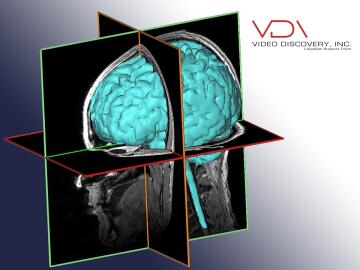3D Volume Rendering and Its Place in Litigation
3D Volume Rendering is a term used in visualization and computer graphics to define the process of taking the multiplane (X,Y and Z planes respectively) information from a complex scan and creating a 3D representation of the files. This technique is widely used in education, prosthetics, and as a medical diagnostic tool - but does it have a place in litigation?
How It’s Used
In our experience, the 3D Volume Rendering of a patient’s medical films can be submitted as demonstrative evidence for use in courtroom proceedings. The versatile 3D model or high quality still images of the textured model are valuable in the testimony of an expert witness as a tool to not only explain anatomy, but to explain the scan results and what those findings mean in relatable terms to the jury. For mediation purposes, these 3D representations are helpful to show adjustors the severity of an injury in a plaintiff’s case. Without much prior knowledge and within the limited time available, someone can easily look at the 3D image and see the extent of the injury in an impactful way. As for defense inquiries, clients often come to us with medical scans spanning several years and request we create models from each study to show a possible lack of change or injury compared to previous studies. Whether used for a deposition, mediation, or live in the courtroom, a 3D Volume Rendering is a powerful new option for presenting client medical scans in a meaningful way.
How It's Produced
A designer experienced in 3D Volume Rendering will look at your MRI or CT scans and establish whether the tool is a viable option for your case. It should be noted that the generation of a quality model requires certain characteristics of the scan to qualify. The most important factor when making the consideration is resolution. Many high-quality film “slices” are required to create a detailed 3D image. Once obtained, these 2D slices are "stacked" from top to bottom and interpolated by the software to create thickness and depth (while X-rays are classified as medical film, they are normally obtained in a single scan fashion and cannot be extruded into 3D models). While the generated 3D model is highly accurate, it is not in its finalized form to present in mediation or trial. The model normally requires color and texture to be applied to its surface by our graphic technician in order to discern anatomical identification and function.
Cost and Turnaround Time
One important factor for determining if 3D Volume Rendering will be useful in your litigation is the cost and time. Certain parts of the human anatomy (such as bone) are easier to segment out and cost less to generate, while other parts of the body (such as the brain) require even higher-quality scans and thus additional time to tune the software in that specific area.
Bringing It All Together
We've received feedback that the models and images we create using 3D Volume Rendering have been invaluable in the courtroom. There is simply no better way to clearly communicate and display a CT or MRI for the lay audience. Previous to this technology, there were occasions when we’ve witnessed opposing counsel lightly mocking generic anatomical models and animations, labeling them as “cartoons” to the jury. The 3D Volumization Model has now revolutionized courtroom presentation of scans, allowing litigation support teams to produce and generate actual anatomical representations of your client. If you're looking for a dramatic, visual way to demonstrate your client's scans, we highly recommend 3D Volume Rendering.
Learn more about our 3D Volumization Services

Jennifer Kerbo is Video Discovery, Inc.'s in-house medical illustrator and animator. She is certified in the generation of 3D models via FDA-approved 3D Volumization software. A graduate of Case Western Reserve University and the Cleveland Institute of Art with a degree in Biomedical Art, Jennifer uses her expertise in science and medicine to create the demonstrative evidence you need to succeed in trial or mediation. During the summer months, Jennifer also teaches the basics of medical illustration to high school students.

